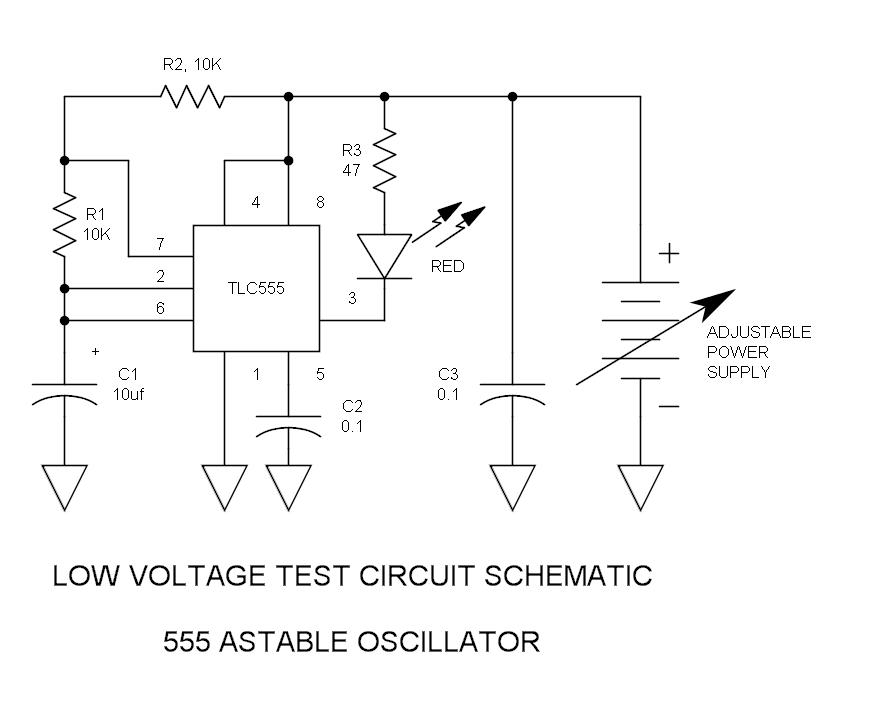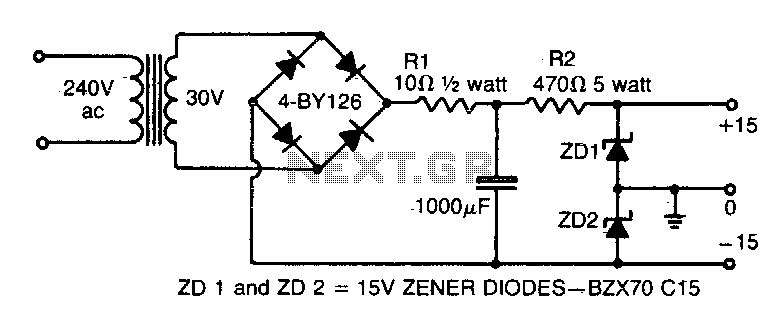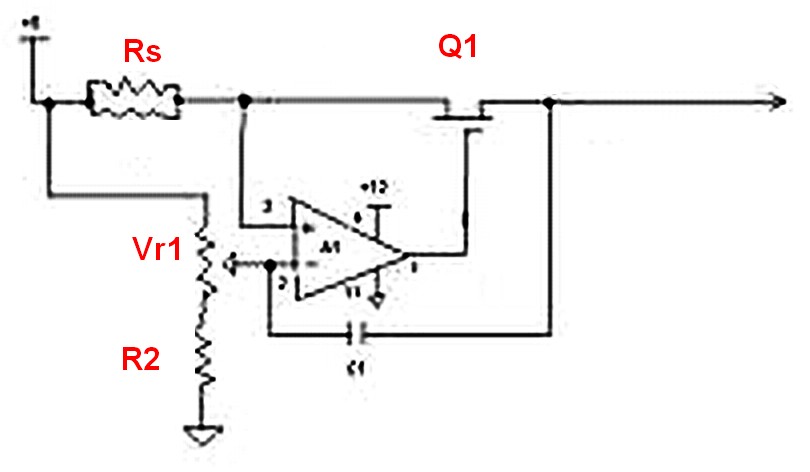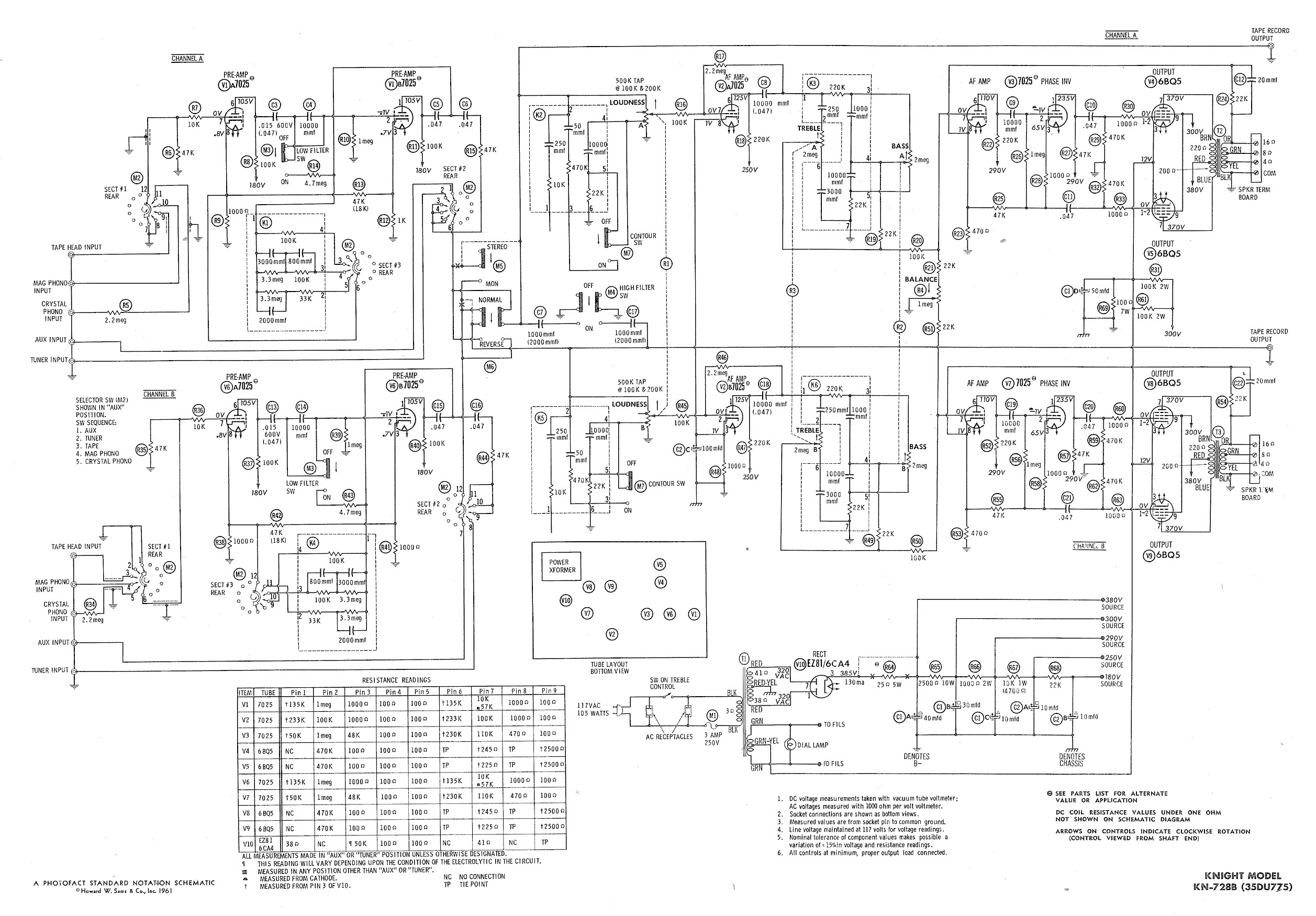
Low Supply Rail Detection
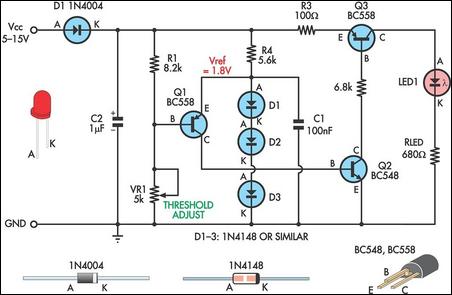
This is a simple low supply rail detection circuit that is inexpensive and can be assembled in approximately 20 minutes. It operates with low power consumption, making it suitable for integration into battery-powered devices. The circuit utilizes three low-cost transistors (Q1-Q3) instead of an operational amplifier. Diodes D1-D3 create a 1.8V voltage reference (Vref) for the emitter of Q1. When the voltage across the voltage divider formed by R1 and VR1 drops below this reference, Q1 activates and provides base bias current to Q2. This, in turn, turns on Q3 in proportion to the bias current, which drives LED1. The brightness of LED1 indicates the severity of the low voltage condition; a brighter LED signifies a lower supply voltage. Trimpot VR1 is calibrated so that LED1 illuminates at the desired low-voltage threshold. The typical current consumption is less than 2mA when LED1 is off. The value for RLED is appropriate for 6-12V operation; for different voltages, RLED can be calculated using the formula RLED = (Vcc - 1.8)/0.01, which corresponds to a current of approximately 10mA.
The low supply rail detection circuit is designed to provide a visual indication of supply voltage levels using a simple transistor-based architecture. The circuit's core components include three transistors (Q1, Q2, and Q3), which form a cascade that amplifies the detection of low voltage conditions. The use of diodes D1-D3 to establish a 1.8V reference voltage is critical for ensuring reliable operation, as it sets the threshold for activation of Q1.
The voltage divider created by resistors R1 and VR1 is essential for monitoring the supply voltage. As the input voltage drops, the voltage across the divider also decreases. When this voltage falls below the 1.8V reference, Q1 turns on, allowing current to flow through Q2 and subsequently activating Q3. The output of Q3 is connected to LED1, which serves as the visual indicator. The relationship between the bias current flowing through Q2 and the brightness of LED1 provides a clear, proportional representation of the supply voltage's severity.
The adjustment of trimpot VR1 allows for fine-tuning of the threshold at which LED1 activates, making the circuit versatile for different applications and desired low-voltage levels. The low current consumption of less than 2mA when the LED is off ensures that the circuit is energy-efficient, a crucial characteristic for battery-operated devices.
For applications requiring different operating voltages, the resistor RLED can be calculated to maintain optimal LED performance. This adaptability makes the circuit suitable for a variety of voltage ranges, ensuring its functionality across multiple devices. Overall, this low supply rail detection circuit provides an effective and economical solution for monitoring voltage levels in battery-powered applications.Here`s a simple low supply rail detection circuit that costs peanuts and takes just 20 minutes or so to make. Its power consumption is quite low, so it could easily be built into battery-powered devices. Instead of using an op amp, the circuit is built around three low-cost transistors (Q1-Q3). Diodes D1-D3 form a 1. 8V voltage reference (Vref) for the emitter of Q1. If the voltage across the voltage divider formed by R1 and VR1 is less than this, Q1 turns on and supplies Q2 with base bias current. This turns on Q3 in proportion to this bias current which then drives LED1. The brightness of the LED gives an indication of the severity of the low voltage condition. The brighter the LED, the lower the supply voltage. Trimpot VR1 is adjusted so that LED1 just comes on at the desired low-voltage point. The current consumption is typically less than 2mA when LED1 is off. Finally, the value shown for RLED is suitable for 6-12V operation. For other voltages, RLED can be calculated using the formula RLED = (Vcc 1. 8)/0. 01 (this equates to a current of about 10mA). 🔗 External reference
The low supply rail detection circuit is designed to provide a visual indication of supply voltage levels using a simple transistor-based architecture. The circuit's core components include three transistors (Q1, Q2, and Q3), which form a cascade that amplifies the detection of low voltage conditions. The use of diodes D1-D3 to establish a 1.8V reference voltage is critical for ensuring reliable operation, as it sets the threshold for activation of Q1.
The voltage divider created by resistors R1 and VR1 is essential for monitoring the supply voltage. As the input voltage drops, the voltage across the divider also decreases. When this voltage falls below the 1.8V reference, Q1 turns on, allowing current to flow through Q2 and subsequently activating Q3. The output of Q3 is connected to LED1, which serves as the visual indicator. The relationship between the bias current flowing through Q2 and the brightness of LED1 provides a clear, proportional representation of the supply voltage's severity.
The adjustment of trimpot VR1 allows for fine-tuning of the threshold at which LED1 activates, making the circuit versatile for different applications and desired low-voltage levels. The low current consumption of less than 2mA when the LED is off ensures that the circuit is energy-efficient, a crucial characteristic for battery-operated devices.
For applications requiring different operating voltages, the resistor RLED can be calculated to maintain optimal LED performance. This adaptability makes the circuit suitable for a variety of voltage ranges, ensuring its functionality across multiple devices. Overall, this low supply rail detection circuit provides an effective and economical solution for monitoring voltage levels in battery-powered applications.Here`s a simple low supply rail detection circuit that costs peanuts and takes just 20 minutes or so to make. Its power consumption is quite low, so it could easily be built into battery-powered devices. Instead of using an op amp, the circuit is built around three low-cost transistors (Q1-Q3). Diodes D1-D3 form a 1. 8V voltage reference (Vref) for the emitter of Q1. If the voltage across the voltage divider formed by R1 and VR1 is less than this, Q1 turns on and supplies Q2 with base bias current. This turns on Q3 in proportion to this bias current which then drives LED1. The brightness of the LED gives an indication of the severity of the low voltage condition. The brighter the LED, the lower the supply voltage. Trimpot VR1 is adjusted so that LED1 just comes on at the desired low-voltage point. The current consumption is typically less than 2mA when LED1 is off. Finally, the value shown for RLED is suitable for 6-12V operation. For other voltages, RLED can be calculated using the formula RLED = (Vcc 1. 8)/0. 01 (this equates to a current of about 10mA). 🔗 External reference

